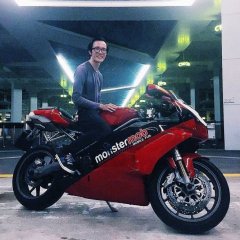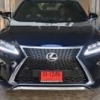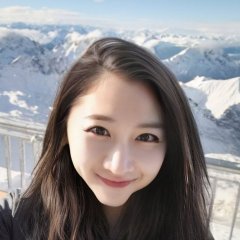Search the Community
Showing results for tags 'Germany'.
-
While the CLA concept will only be announced during IAA Munich Auto Show (5 - 10 Sep), prototype with production ready parts has been caught testing on the road in Europe. The upcoming sedan will be part of the newly founded Entry Luxury category. The smallest sedan to carry the three-pointed star will ride on the Mercedes Modular Architecture. The next-gen CLA won't have a bigger brother anymore since Mercedes is pulling the plug on the CLS at the end of this month. Stay tuned for more info.
- 21 replies
-
- 11
-

-
@Tianmo @therock hold your horse, new model coming in a year + time. The next generation of the Mercedes GLB made its spy debut in Europe. The new GLB will share its MMA underpinnings with the CLA and the GLA. It will be available with fully electric and mild-hybrid powertrain options. The front end features slimmer LEDs flanking a large grille that appears to be mounted lower on the front bumper. The greenhouse has been slightly tweaked, as with the upright tail. The latter has been disguised with fake taillight stickers resembling those of the discontinued Smart Fortwo. Speaking of resemblance, the Mercedes GLB might have a similar shape and size with the Smart #5, but the two SUVs are unrelated, as the Smart rides on a Geely-sourced architecture. Mercedes’ entire future compact lineup will ride on the new MMA (Mercedes Modular Architecture) platform, which is compatible with ICE and EV powertrains. We already know most of the options for the upcoming CLA, which will likely find their way under the hood of the GLB. The fully electric models that will eventually replace the EQB could offer the option between a rear-mounted electric motor with 268 hp (200 kW / 272 PS), or a dual-motor setup with 375 hp (280 kW / 380 PS). The EV will likely be available with 58 kWh and 85 kWh battery packs, although its driving range will be shorter than the 750 km expected from the more aerodynamic CLA. The ICE-powered lineup will include a mild-hybrid 1.5-liter four-cylinder gasoline engine and a small electric motor inside the eight-speed dual-clutch automatic transmission. The combustion engine is expected to be offered with different outputs, rated at 134 hp (136 PS), 161 hp (163 PS), and 188 hp (190 PS), with an additional 27 hp (20 kW) from the electric motor.
-
Will be unveiled officially on 25 July in Europe. The latest gen Q3 look less feminine to me, and just like a smaller brother of Q5, Q7...
- 474 replies
-
- 11
-

-
Mercedes has been coming out with several new variants using smaller (sub 2.0L) engine for its passenger vehicle lineup of late and there seems to be no end to the trend, in view of tighter emissions and fuel economy requirements by EU and other countries. I have to admit that I am surprised when I learnt about the "new" C160 at the beginning of this year and E180 shortly after that, both having a 1.5L inline 4 turbo-charged unit under it hood, producing 129ps / 210Nm and 156ps / 250Nm respectively. And the naive me thought these are the limits. I am wrong, as the CLS260 has just been introduced in China, and spotted the same 1.5L inline 4 unit under the hood, but producing 184ps / 280Nm this time with a help of the mild hybrid setup. Coupled with a 9 speed automatic transmission, it can accelerate to 100 km/h in 8.7 seconds and reach a top speed of 250 km/h. Fuel consumption is rated at 7.2 L/100 km (13.89 Km/L), which is decent to say the least, for a car of this size (~5m in length) and weight (~1.8 ton). While the spec look very impressive for this entry variant, but taking into consideration that the selling price is unlikely to be more than $30K different from the CLS350 due to COE, VES and other vehicle taxes, while saving in road tax is "negligible" since the CLS350 is actually powered by a 2.0L turbo engine (instead of 3.0L as many have expected), it is not a good deal after all. What is your take? Will we be seeing a 1.5L S280 soon, or even a GLS300? I sincerely hope it will not happen. BTW, rumor mill is saying that the next C43 AMG and E53 AMG will be using a 2.0L unit... ...
- 119 replies
-
- 16
-

-
Sexy is the word. @mercury1 @vratenza this one for your consideration? Munich. BMW consistently continues to pursue the brand’s current model offensive whilst developing an innovative vehicle concept for the premium compact segment. During the annual results press conference, BMW AG CEO Harald Krüger will announce the presentation of the first BMW 2 Series Gran Coupe. With the sporty and elegant four-door coupe, the premium automobile manufacturer is adding to its range in the compact segment a particularly designoriented model for modern, urban target groups. The concept of a four-door coupe, already successful in higher vehicle classes, will in future combine a dynamic charisma and an expressive design with a high degree of everyday suitability also in the premium compact segment. The first BMW 2 Series Gran Coupe will make its word debut at the Los Angeles Auto Show in November 2019, with the worldwide market launch beginning in the spring of 2020. The BMW 2 Series Gran Coupe sets new accents in individuality, aesthetics and emotion in the premium compact segment. It combines an emotive design with sportiness and the latest innovations in operation and connectivity technology. Therefore, the BMW 2 Series Gran Coupe offers the ideal prerequisites to attract new target groups to hallmark BMW driving pleasure. BMW already offers a unique range of compact models for various different requirements and target groups that is unmatched within the competitive environment. The BMW 2 Series Gran Coupe will once again create fresh impulses in this class. It builds on the latest BMW front-wheel drive architecture and shares a multitude of technological developments with the new BMW 1 Series, which will also be presented during the course of 2019. The BMW 2 Series Gran Coupe has been conceived as a global offering that constitutes an attractive enrichment, especially for markets in which car buyers show a strong affinity for notchbacks. As an exclusive alternative to the classic saloon, the four-door coupe addresses all target groups that prefer a sophisticated design and a self-assured look in the compact segment as well. Some video & spy shots to quench your thirst.
-
Look very sleek and just like a mini 7 series, minus the controversial monster size grille.. The car's shark-like front nose appears to be sitting lower compared to the current model to lend the 5 Series an angrier look without the odd split headlights of the next 7 Series, X7 facelift, and X8 / XM. A subtle spoiler integrated into the trunk lid can be seen as well, while the dashboard appears to be fully camouflaged. It's likely a sign the cabin will be completely revamped, possibly by adopting the dual-screen setup with a 12.3-inch driver's display and a 14.9-inch infotainment as seen in the iX and i4 electric models running on iDrive 8.
-
This is the replacement model for the aging A4 (yes, you read it correctly, no typo). So is the A4 dead? Why not really. The reason for the new name plate has to do with Audi's new name strategy, where odd number are reserved for ICE model (petrol and hybrid) such as A3, A5, A7, Q3, Q5, Q7, while BEV will be allocated with even numbers, such as the new Q4 and Q6 e-Tron, got it? The new A5 comes with a fresh look, updated tech, and a pair of perky ICE engines that Audi hopes will keep drivers happy no matter their budget. The base model has a turbocharged 2.0-liter four-cylinder that sends 268 horsepower to all four wheels via a seven-speed dual-clutch gearbox. Variable turbine geometry for the turbocharger up the engine’s efficiency (actual fuel economy figures are TBD). The new S5 has a turbocharged 3.0-liter V-6 sending 362 hp to all four wheels via a seven-speed dual-clutch. It's the first time Audi has used this transmission in an S5. Its Quattro all-wheel-drive system is hooked up to a Quattro sport differential with torque vectoring. It's the first of many cars to use Audi’s shiny new Premium Platform Combustion architecture, which is set up for front- or all-wheel drive, as well as straight-up gas or hybrid powertrains. Let see how the new A4 looks like in a few weeks time. S5 Sedan (Liftback) S5 Avant (Wagon)
-
Somehow the A-Class taillight design is a better fit in the new C-Class...
- 231 replies
-
- 12
-

-
- mercedes
- mercedes benz
- (and 8 more)
-
The new face does not look like a Porsche at a quick glance. Putting the look aside, one of the highlight is it unique active suspension system. The optional Porsche Active Ride, available for E-Hybrid, allows the car to lean into corners like a motorcycle, by keeping the body flat and even overcompensate for the vehicle’s pitch and roll movements The standard two-chamber, two-valve air suspension with Porsche Active Suspension Management separates the damper’s compression and rebound control for greater comfort. Rear-axle steering is also optional for all model. Panamera Turbo E-Hybrid Porsche Panamera 4 Porsche will offer four different E-Hybrid powertrains, including the all-powerful Panamera Turbo E-Hybrid. It packs a revamped twin-turbocharged 4.0-liter V8 engine and an electric motor powered by a 25.9-kilowatt-hour battery. Total output is 670 horsepower and 929 Newton-meter of torque, sending power to all four wheels via an eight-speed PDK transmission. It can hit 100 kilometers per hour in 3.0 seconds and reach a top speed of 314 km/h. The Panamera and Panamera 4 get a turbocharged 2.9-liter V6 engine under the hood. It produces more power than before, pumping out 348 hp and 499 Nm of twist – an increase of 23 hp and 50 Nm, respectively. The V6 can propel the regular model to 100 km/h in 5.0 seconds and help it reach its 272 km/h top speed. The all-wheel-drive Panamera 4 can achieve that same feat in 4.7 seconds, reaching 270 km/h.
-
It look larger and sleeker... The length and size of the rear quart window pointing to a 7 seater variant?!
- 26 replies
-
- 6
-

-
- mercedes
- mercedes benz
-
(and 7 more)
Tagged with:
-
Another odd design luxurious sedan in the making? At a quick glance, it shout Peugeot, to me. The next-generation BMW 7 Series has been caught once more, hinting at a completely redesigned exterior concealed under many layers of camouflage. Those simple headlights are likely provisional as they seem to have a basic look, but the original 8 Series-esque placement and shape is likely the final one. Tiny rivets on many parts of the body indicate the 7 Series prototype has more than just one layer of disguise, so it's best not to jump to any conclusions about the car's exterior appearance. As for the interior, the first thing you will notice are those side-by-side screens akin to the setup you'll find in the iX SUV and i4 Gran Coupe. In those two fully electric vehicles, the instrument cluster measures 12.3 inches and is accompanied by a larger 14.9-inch touchscreen infotainment running on iDrive 8. Much like in the EVs, the screens are housed within a massive piece of curved glass slightly tilted towards the driver. It’s going to be a long wait before the next 7 Series will hit the streets as production reportedly won't start until July next year.
-
https://www.thedrive.com/news/42806/new-porsche-718-cayman-gt4-rs-laps-nurburgring-quicker-than-last-911-gt3 "New Porsche 718 Cayman GT4 RS Laps Nurburgring Quicker Than Last 911 GT3 The Cayman line is set to get a new halo model with devastating performance. The 718 Cayman GT4 is a highly competent vehicle, but as it turns out, the platform is capable of even more. Enter the Porsche 718 Cayman GT4 RS. In the development of this new beast, Porsche did what every good German automaker does, and took it to the Nürburgring. Results were impressive, as you see in the official lap video. With Porsche development driver Jörg Bergmeister behind the wheel, the GT4 RS laid down a 7:09.3 laptime around the 20.832-kilometer Nürburgring-Nordschleife circuit, while posting a 7:04.511 lap on the 20.6 km layout. The latter is a full 23.6 seconds quicker than the existing Cayman GT4, making it clear that the RS is no minor upgrade. The laptimes were set with a production model vehicle, though equipped with a racing seat for driver safety. A set of sticky Michelin Pilot Sport Cup 2 R tires were used, which are an available option for the car. Andreas Preuninger and Jörg Bergmeister celebrate after setting a rapid laptime in the Porsche Cayman GT4 RS. It's a rapid laptime for a car that isn't even top of the Porsche range. It compares well with the 6:43.3 second time set on the 20.8 km course by the 911 GT2. It should also let owners walk away from the Tesla Model S Plaid on a single lap, let alone during sustained running. Perhaps most notably, though, it bests the time set by the old 911 GT3, which lapped the course in 7:12.7 back in 2017. "During development, we gave the 718 Cayman GT4 RS everything that characterises a genuine RS: lightweight construction, more downforce, more power and, of course, an even higher level of responsiveness and feedback to driver inputs," said Andreas Preuninger, who holds the title of Director GT Model Line at Porsche. Preuninger also noted the value of testing at the Nürburgring, adding that "The fantastic lap time of the Nordschleife is impressive proof of how clearly noticeable these improvements in driving dynamics are." Porsche hasn't yet revealed the exact specifications of the GT4 RS. However, based on Preuninger's statements, expect more than the 414 horsepower and 317 lb-ft of torque of the GT4, and a curb weight a little less than 3295 lbs. Speculation in the car world is rife, with expectations the GT4 RS could boast up to 500 horsepower. These figures are backed up by little hard information, however, so should be taken with a grain of salt. Meanwhile, the obvious aero mods on the GT4 RS should help with sticking the car to the track in high-speed cornering. Bergmeister refers to the car as an "uncompromising driving machine," noting that "it feels as nimble as a go-kart on mountain roads, yet is impressively stable and well-balanced on the racetrack." We'd certainly love to take a go-kart out on the Tail of the Dragon, but it likely wouldn't be anywhere as near quick as the GT4 RS. Bergmeister's opinion carries some weight, but not only due to his fast laptimes. As a development driver, he spent over 500 hours behind the wheel during the car's development. The GT4 RS will be fully revealed at its world premier in November, but for now, marvel at the hot tour of Germany's most famous racing circuit. The first Cayman to bear the RS moniker seems like it will live up to the badge."
- 15 replies
-
- 4
-

-
Coupé or Cabriolet? Targa: The Best of Both Worlds Porsche completes its sports car trio in time for summer: following on from the Coupé and Cabriolet, the third body variant of the new 911 generation now makes its debut with the all-wheel drive Porsche 911 Targa 4 and 911 Targa 4S models. The distinguishing feature of the Targa remains its innovative, fully automatic roof system and, just like the legendary original Targa model from 1965, it features a characteristic wide roll hoop, a movable roof section above the front seats and a wraparound rear window. The roof can be comfortably opened and closed in just 19 seconds. It is powered by a six-cylinder, three-litre boxer engine with twin turbochargers: the Porsche 911 Targa 4 now delivers 283 kW (385 PS) and, in combination with the optional Sport Chrono package, accelerates from zero to 100 km/h in just 4.2 seconds - one tenth faster than before. The engine in the 911 Targa 4S boasts 331 kW (450 PS) and reaches the 100 km/h mark in just 3.6 seconds under the same conditions - four tenths faster than its predecessor. Top speed of the 911 Targa 4 is 289 km/h (up two km/h), while the 4S peaks at 304 km/h (up three km/h). Both sports cars are fitted with eight-speed dual-clutch transmission (PDK) and intelligent all-wheel drive Porsche Traction Management (PTM) as standard to deliver maximum driving pleasure. Alternatively, the 911 Targa 4S can be ordered with the newly developed seven-speed manual gearbox, with which the Sport Chrono package is included. New technology has also been integrated to extend the range of features for both 911 models and, for the first time, Porsche InnoDrive, which includes adaptive cruise control, is available. Thanks to the enhanced Smartlift function, ground clearance can be programmed so that it is raised for everyday use. The list of options is supplemented by an extensive range from Porsche Tequipment and new personalisation options from Porsche Exclusive Manufaktur. Porsche will further extend the combination of traditional style elements, timeless design and cutting-edge technology in a special edition of the 911 Targa, which will make its debut in June. Efficient biturbo boxer engine Like the 911 Carrera models, both Porsche 911 Targa variants profit from the increase in power provided by the turbocharged three-litre six-cylinder boxer engines. Both performance and everyday usability benefit as a result. The engine in the 911 Targa 4 produces 283 kW (385 PS) at 6,500 rpm, which is 11 kW (15 PS) more than its predecessor. Maximum torque of 450 newton metres is delivered across a wide engine speed range of between 1,950 and 5,000 rpm. With 331 kW (450 PS), the 911 Targa 4S delivers 22 kW (30 PS) more output than its predecessor and generates maximum torque of 530 Nm (up 30 Nm) between 2,300 and 5,000 rpm. Optimised all-wheel drive for better traction The enhanced performance of the new all-wheel drive models goes hand-in-hand with further development of the front-axle drive. The clutch and differential unit is water-cooled and has reinforced clutch discs for greater robustness and a higher load capacity. The increased actuating torque at the clutch improves its adjustment accuracy and the function of the additional front-axle drive. Overall, the enhanced front-axle drive with PTM (Porsche Traction Management) contributes to even better traction in all road conditions. Further developed chassis for more comfort and safety The electronically controlled variable damping system PASM (Porsche Active Suspension Management) is part of the standard equipment on the new 911 Targa models. This system automatically adjusts the damping characteristics in terms of driving comfort and handling to each driving situation and has two manually adjustable maps, Normal and Sport. Porsche Torque Vectoring Plus (PTV Plus), which includes an electronic rear differential lock with fully variable torque distribution, is added as standard equipment for the Targa 4S and is available as an option on the Targa 4. Like the other eighth generation Porsche 911 variants, the Targa models are also equipped with Porsche Wet mode as standard. Sensors fitted in the front wheel housings are capable of detecting water on the road surface and, if significant volumes of water are picked up, a signal in the cockpit provides a recommendation for the driver to manually switch to Wet mode. The drive responsiveness is then adapted to the conditions to guarantee maximum driving stability. The driving dynamics setup for the 911 Targa 4 includes 235/40 ZR tyres on 19-inch alloy wheels on the front axle and 295/35 ZR tyres on 20-inch wheels on the rear axle. As standard, the 4S model is fitted with 245/35 ZR tyres on its 20-inch front wheels and 305/30 ZR tyres on its 21-inch rears. On the Targa 4, deceleration is taken care of on both axles by 330-millimetre brake discs with black four-piston monobloc fixed callipers. The red-painted brake callipers on the Targa 4S have six pistons at the front axle, four at the rear while its discs measure 350 mm front and rear. The Porsche Ceramic Composite Brake (PCCB) can be ordered as an option. Extravagant Targa design with a modern interpretation The exterior of the Porsche 911 Targa is characterised by the design elements of its 992 model generation. Compared to its predecessors, its body features significantly more pronounced wheel housings at the front and, between its LED headlights, its bonnet has a distinctive recess evoking the design of the first 911 generations. Its rear is dominated by its wider, variably extending rear spoiler and seamlessly integrated, elegant light bar. With the exception of the front and rear sections, the entire outer skin is made from aluminium. The interior echoes the 911 Carrera models and is characterised by the clear and straight lines of its dashboard and its recessed instruments. The 911 models from the 1970s provided the inspiration here. Alongside the central rev counter - very much a defining feature for Porsche - two thin, frameless freeform displays extend the information provided to the driver. A compact switch unit with five buttons for direct access to important vehicle functions is located below the 10.9-inch centre screen of the Porsche Communication Management (PCM). The standard PCM features include online navigation based on swarm data as well as Connect Plus with Apple Car Play. The model for a new class of sports cars since 1965 The 1965 911 Targa 2.0 was a trailblazer for a whole new type of car. Originally marketed as a "safety cabriolet with anti-roll bar", the Targa, with its detachable roof, soon established itself as an independent concept and indeed became a style icon. Right through to the present day, Porsche has continued to combine two worlds in the 911 Targa: the advantages of open-top driving in a cabriolet combined with the everyday comfort and safety of a coupé. Prices The new Porsche 911 Targa models will be launched on the market from August 2020. Prices (including 19 percent VAT and country-specific equipment) start from 128,486 euros for the 911 Targa 4 and from 143,956 euros for the 911 Targa 4S.
- 30 replies
-
- 11
-

-
A good walk through of the grille evolution in Mercedes for the past 120 years. I am particularly amazed by the very forward looking grille on the 1954 300SL, which make a come back only about 60 years later. Merc's front-end has gone a long way after 12 decades 1900 - 2016 1900 - EV Era The grille is the easiest way to discern a car's make. It serves as the face of the automobile, which gives it an identity amid the sea of automotive brands on the planet. But unlike the human face, vehicle grilles go younger with time, evolving and conforming to what the car needs and what is allowed beyond the limits of functionalities. That's exactly the case with Mercedes-Benz's grille. It has immensely evolved ever since Wilhelm Maybach fitted his invention, the honeycomb radiator, to the Mercedes 35 PS in 1900. The radiator grille was designed to solve the cooling problem of internal combustion engines then, but ultimately commenced the era of vehicle grilles. In 1931, the arrival of the Mercedes-Benz 170 changed everything. For the first time, the radiator was mounted behind the grille for protection, which was part of the vehicle's hood. This gave birth to the iconic chrome grille, which not only served as a protection for the radiator but also as an identifier, together with the three-pointed star emblem. From then on, Mercedes continued evolving the chrome grille for decades. In the 1950s, Merc introduced a new standalone grille design with the 300 SL "Gullwing" and the smaller 190 SL roadster. It's known internally as the "sports car face." The horizontal slats became a hallmark among subsequent Mercedes vehicles. In 2007, Mercedes started offering grille choices to customers depending on the trim level. They can either go classic (Classic and Elegance) or sporty (Avantgarde), which was offered in both C-Class and E-Class. With the electric vehicle era peeking around the corner, Mercedes-Benz grilles are here to stay but with a different function from the protective radiator cover in the past. Without the need for a radiator, the German marque moves on to a Black Panel grille for its EQ range, which serves as a perfect surface for hidden but indispensable sensors. Here are some of the grilles from the past... And the future. So which is your favorite?
- 15 replies
-
- 16
-

-
This is the way to encourage more to switch to public transport but to some 80+ people in one particular cabinet, this would be raiding the reserve! Germany Experimented With Unlimited Train Rides For $9, Here’s What They Found Earlier this year, Germany was looking for a way to reduce the nation’s dependence on energy consuming cars, and decided to try something bold: it offered a monthly train ticket for €9 (S$12.55 at current exchange rates). The ticket entitled users to access the entirety of Germany‘s rail and public transit networks, with the exception of high-speed trains. The hope was that the scheme would encourage drivers to take train trips instead of using their cars as energy woes threaten to impact the country following Russia’s invasion of Ukraine. Part of a relief package, the program will soon end and, although more thorough research is still underway, early findings suggest that the scheme was a measured success. Firstly, it proved very popular with the population. The New Statesman reports that German rail companies sold 38 million tickets over the last three months, which amounts to about half of the nation’s population. That popularity was actually a bit of an issue at first, leading to packed trains and stations as companies struggled to keep up with the newfound demand. According to Vox, ridership rebounded to pre-COVID levels, which was good news, but it only reduced car trips marginally. Studies in Munich found that congestion fell by about three percent. That’s because most people used the trains for vacations and for trips they might not have otherwise taken. Still, that meant that some elderly people and others with low income were able to take trips that would have been out of their reach. In addition, researchers found that during the trial period, 35 percent of people used trams and buses more, and 22 percent used public transit for the first time, about a quarter of those people using it four or more times per week. Traffic data from Tomtom, meanwhile, showed that congestion lowered in 23 of 26 cities it studied during the nine-euro-ticket period. According to riders, though, the biggest advantage of the ticket was how it simplified travel in Germany. Whereas German rail travelers tend to have to navigate many fares and complicated routes, the single ticket price meant that riders could easily jump from train to tram to bus where necessary. “The ticket shows that people want to use public transport — when it’s easy to use and when it’s affordable,” Lukas Iffländer, the vice chairman of Fahrgastverband Pro Bahn, a passenger association, said. The concept also revealed some weaknesses in Germany‘s rail network, pointing to areas that are underserved by transit and others where transit doesn’t run when it might have been useful, such as late at night. The trial period may have been undercut, too, by subsidies for fuel that happened at the same time. Although the price of transit was heavily cut down by the government, so was the price of gas, which may have led some drivers to wonder, “Why bother with transit?” “It’s not sufficient if you only support alternatives to the car, but you have also to be more restrictive towards the car,” said Frederic Rudolph, head of the T3 Transportation Think Tank.
- 30 replies
-
- 10
-

-
.png)
-
https://asia.nikkei.com/Politics/International-relations/Indo-Pacific/German-Air-Force-shows-it-can-be-in-Asia-in-a-day?utm_campaign=GL_indo_pacific&utm_medium=email&utm_source=NA_newsletter&utm_content=article_link&del_type=11&pub_date=20220817213000&seq_num=2&si=44594 German Air Force shows it can be in Asia in a day Taiwan issue serves as a wake-up call to European powers A Eurofighter, painted with the flags of Australia, Singapore, Japan and South Korea, refuels with the help of an Airbus A330. © Bundeswehr SHOGO AKAGAWA, Editor-in-Chief for Europe, Middle East and AfricaAugust 16, 2022 21:27 JST LONDON -- The German Air Force has begun an exercise named Rapid Pacific 2022, sending a fleet of aircraft to the far lands of Asia. Six Eurofighter jets, four A400M multirole aircraft and three A330 multirole tanker transport planes on Monday took off from Neuburg Air Base, en route to Singapore. The goal was to reach the city-state within 24 hours, which it did, to show that the German Air Force can be in the heart of the Indo-Pacific in a day. From there, the fleet will head to Australia, South Korea and Japan. Fittingly, one Eurofighter was painted with the flags of Germany and the countries the fleet is visiting, to show unity with Germany's Indo-Pacific partners. Why is the Bundeswehr (German Armed Forces) deploying aircraft to the Indo-Pacific for the first time in the post-World War II era? "We want to show that we stand for multilateralism and the rules-based international order, together with our security partners," a Ministry of Defense spokesperson told Nikkei. Clearly, China is in mind. Following the deployment of a frigate to East Asia in 2021, this is another political message from Berlin. The specially foiled Eurofighter "Air Ambassador" takes off from Neuburg Air Base to join the Rapid Pacific 2022 exercise. © Bundeswehr It marks a stark change of direction for Germany. The shift was led by the Social Democratic Party (SPD), the champion of pacifism and the new eastern policy, which sought reconciliation with the Communist bloc. Berlin has learned the harsh lesson of going too deep with authoritarian states. For the half-century since the 1970s, Germany relied on Russia for energy. Those ties are now proving difficult to sever. In an interview with Nikkei, SDP heavyweight Michael Muller, a former mayor of Berlin, emphasized, "We must ensure that we do not get into new dependencies with China. This is the lesson from the current Russia-Ukraine crisis." As Germany, which for years pursued a China-heavy Asia policy, distances itself from China, other European countries are accelerating the shift even faster. Sen. Andre Gattolin of France noted that while Russia is the immediate concern, China poses the bigger long-term threat. Driven by this trend, Europe, which long had been disinterested in the issue of Taiwan, is now ready to side with the U.S. on the contentious topic. When China reacted angrily to House Speaker Nancy Pelosi's stop in Taiwan and began live-fire drills surrounding the island, Josep Borrell, the EU's foreign policy chief, said the response could not be justified. The French Foreign Ministry also pressed China to respect order. Faced with the real threat of Russia, European powers have rediscovered the value of the Transatlantic alliance with the U.S. The U.S. has Europe's back when it comes to Russia. Therefore, if the U.S. is confronting China, Europe should back the U.S. too, recent thinking goes. A new determination is rising in Europe. China's strategy to counter this trend seems to be to propose bilateral talks with individual European countries. Splitting the democratic camp has always been a big part of the authoritarian playbook. Europe, so far, has been swaying and avoiding the punches. Taiwan sees an opportunity to make inroads. In May, Economic Vice Minister Chen Chern-chyi visited Lithuania for the first vice-ministerial meeting between the two economies and held a business roundtable. Workers add finishing touches at the paint shop at BMW's plant in Shenyang, China. German manufacturers have massive operations in the country. © BMW But for the European economy, distancing itself from China is far more complicated than doing so with Russia. European leaders will keep an eye on the quinquennial Chinese Communist Party national congress this autumn, hoping that a more flexible leadership emerges in Beijing. Until then, the plan is to uphold the "One China" policy. Liz Truss, the British Foreign Secretary running for prime minister, is a known China hawk. Yet, she has declared that she has no intention of visiting Taiwan as prime minister. In Germany, some pro-Taiwan lawmakers are planning a bipartisan trip to Taiwan. East Asia has traditionally not been an area of interest for Europe. The lack of experience will inevitably force policymakers to stumble as they try to formulate a China strategy. Japan and the democracies of Asia find themselves with a golden opportunity to lend a hand to Europe in this endeavor and deepen ties.
-
Normal travel is back! Or, that's sure how it looks like a week ago judging by the sheer number of people at the airport when I had the good fortune to once again fly over to the beautiful city of Bavaria for BMW's launch of the new 7-Series and i7. Full flight service seemed to have resumed as well with starters and main courses now served individually plated rather than together on a single tray with clear plastic covers on top. Having had the Boon Tong Kee Chicken rice on my previous trip, I opted this time for the Lobster Thermidor. Granted that the same dishes can taste slightly different on each flight, it was really good this time around, creamy, tasty and thoroughly enjoyable! After a rather fair few hours of intermittent sleep, we approached Germany and it was time for a Laksa brekkie, it wasn't too bad but I reckon Bah Chor Mee's the better option. Also, isn't it time for Singapore Airlines to offer full wifi unlimited on-board and not just a measly data-capped service? Come-on, it's 2022 already! A view I will never get tired of as we cruised towards Munich. And for the first time ever, clear skies all the way toward the airport, giving us a birds-eye view of the City, the Olympic Tower and BMW's iconic four-cylinder building. You can even still see the alps in the distance. What a sight. Since we landed rather early in the morning, we took some time out to explore the city and enjoy its various culinary offerings with a walking food tour. Having been here twice, some of the places we visited were still new to me. What's still familiar (and still welcomed) is, of course, a quick visit to a Munich institution, Haxnbauer, for their Schweinshaxe sandwich. I'm not joking on the institution bit too, because Haxnbauer is located in a historical building that dates back to at least the 14th century, the Scholastikahaus. Back to the sandwich, yes, it is still so good, but also, still too big for me to finish in its entirety. Don't worry, I ate up all the good bits. For everyone who's thinking of visiting Munich, a visit to Haxnbauer is a must, the crackling on the pork knuckles served here is sublime. If you ever have to choose between Hofbrauhaus, Ratskeller or Haxnbauer, here's a quick tip, Hofbrauhaus for the atmosphere, Ratskeller for the convenience and Haxnbauer for the food! All 3 will serve up a good time so don't fret too much if you only have the time for one. Another locale I had yet to visit was the Biergarten in the English gardens. Having visited the garden on my last trip with a slightly busted toe, tighter schedule and much colder weather, I only managed a quick stroll through the park before setting off. This block of concrete is a piece from the Berlin wall. With the conflict going on not too far from here, it did feel a little more sombre seeing such a relic. As we headed onward through the garden, the sun was out, the air was cool and it really did seem like the entire city was here soaking up the lovely weather and atmosphere (and lack of mosquitoes). Something we can only dream of having back in Singapore. Finally, we reached the Biergarten, it was huge! It's been quite a while since I last saw something like this, while it might have looked packed, we still managed to get a table and some seats rather easily. With some drinks downed to cool us off, it was time for our tour guide to set off as we headed towards the BMW Welt and museum for the second half of our first day in Munich. Stay tuned!
- 10 replies
-
- 18
-

-
- an auto-otaku heads back to germany
- munich
-
(and 2 more)
Tagged with:
-
Guess who's back AN AUTO-OTAKU HEADS TO GERMANY Part 1: https://garage36.wordpress.com/2021/10/26/an-auto-otaku-heads-to-germany/
- 49 replies
-
- 17
-

-
The 1987 trains in operation since MRT was a thing will be retired. The first two new trains for the North-South and East-West MRT lines (NSEWL) have arrived in Singapore. Source: https://mothership.sg/2022/02/new-mrt-trains-replace-1987-fleet/ They are part of a fleet of 106 new trains designed in Germany and built in China. The trains were shipped to Singapore by sea. The journey took about one month to complete. Details about the new trains were shared by the Land Transport Authority (LTA) on Facebook on Feb. 21. Replace trains in use since 1987 The new rolling stock will replace trains that have been operating on the two lines since 1987 when the NSEWL began operations. The first-generation trains will be retired when the new trains enter service from the end of 2022. The new trains also highlight how the supply chain spans many countries in the northern hemisphere. “The design was conceptualised in Germany before they were manufactured and assembled in China, and their parts were sourced from various countries including United Kingdom, France and Germany,” LTA wrote. Decked out in green and red stripes, the traditional colours of NSEWL, they will serve commuters from end-2022, LTA added. The trains will undergo rigorous testing and commissioning works before they are ready. Standardised look In 2018, LTA announced that it had bought 66 new trains to replace its oldest fleet. The trains were to be made by Canadian company Bombardier Transportation, and were supposed to arrive in batches from 2021. In 2020, it was announced that a second set of 40 trains were to be bought from Bombardier to replace second- and third-generation trains on the North-South and East-West lines from 2024. The 19 second-generation trains have been operating since 1995. The 21 third-generation trains have been in service since 2000. A total of 198 trains of six different types serve the NSEWL as of 2020. In contrast, all 106 new trains will have the same design.
-
She’s stepping down as chancellor of Germany after 16 years. https://www.theguardian.com/world/2021/oct/22/monument-eu-leaders-hail-angela-merkel-final-summit A true leader. In 16 years of power, Angela Merkel did not appoint any of her relatives to a state position. Germany said goodbye to its leader, physicist and quantum chemist, who was not tempted by fashion or lights and did not buy real estate, cars, yachts and private jets. They came out on their balconies and clapped for 6 minutes, a standing ovation across the country. She leaves and her loved ones claim no benefits. For sixteen years, she never changed the style of her wardrobe. At a press conference, a journalist asked Merkel: ''We realize that you are wearing the same suit, don't you have another?» She replied: “I am a civil servant, not a model.” In another press conference, they asked her: "Do You have a housemaid cleaning your house, preparing food, etc." Her response was: "No, I have no servants or need them. My husband and I do this work every day at home." Then another journalist asked: "Who is doing the laundry, you or your husband?" Her response was: "I'm fixing the clothes and my husband is the one who runs the washing machine." Ms. Merkel lives in a normal apartment like any other citizen. She lived in this apartment before being elected Chancellor of Germany. She did not leave it and she does not own a single villa, houses, pools, gardens.
- 35 replies
-
- 11
-

-
Since I left on 16th I had been to a town in Germany and then to Venice. Haven't got a chance to post much because these 2 places I went to the internet is horrendous both wifi in hotel and 3/4G. Now I really appreciate being in Bangkok and Singapore where the internet is easily available and fast too. I just arrived in Florence and is able to upload most of the stuff so I could post better. https://www.youtube.com/watch?v=a5zcD2vzSjI Immediately after arriving in Munich Airport, was whisked off to a small city/town of 18,000 people at the Austrian border. Drove about 1.5 hours. Arriving in the town went to a Bavarian lunch here Nice quiet restaurant Soups Vegetarian meal Very non-vegetarian meal lol
- 49 replies
-
- 10
-

-
German politicians expressed shock on Tuesday over the killing of a 20-year old petrol station worker after an argument about a face mask and said that coronavirus deniers who are willing to use violence will not be tolerated. The killing on Saturday evening in the western town of Idar-Oberstein has hit the national headlines as it is one of the only such cases linked to COVID-19 restrictions. Prosecutors have said that the petrol station cashier had asked a 49-year old man who wanted to buy beer to comply with the rules and put on a mask. The customer refused and left but returned later wearing a mask which he pulled down when he approached the cashier who again referred to the rules. "Then the perpetrator pulled a revolver and shot the cashier in the head from the front. The victim fell to the floor and was immediately dead," prosecutor Kai Fuhrmann told reporters. The suspect later gave himself up at a police station, saying the coronavirus measures were causing him stress, said Furhmann. He is being detained. This is why I'm thankful guns are not allowed in our country. With the number of crazies we have surfacing, it'll be terrible if everyone pulls out a gun just to express their dissatisfaction.
- 12 replies
-
- 12
-

-

-

-

-
https://www.straitstimes.com/singapore/transport/fully-vaccinated-travellers-can-travel-to-germany-and-back-without-serving-shn Fully vaccinated Singapore residents can travel to Germany and back without having to serve stay-home notices (SHN) from Sept 8. They will instead have to undergo four Covid-19 polymerase chain reaction (PCR) tests, including one to be taken before the flight. It will be the first time residents can go for quarantine-free leisure travel since the Republic shuts its borders in March last year. The development comes after Singapore on Thursday (Aug 19) announced a new scheme in which it unilaterally opens it borders to vaccinated travellers from selected countries, starting with Germany and Brunei. With Germany already unilaterally opening its border to Singapore, those travelling on designated flights from Singapore will be able to fly to Germany and return without having to be quarantined. They will instead be subject to several Covid-19 tests and a short period of self-isolation, replacing quarantine requirements. TRAVEL AT YOUR OWN RISK.
- 71 replies
-
- 9
-

-
- vaccination
- travel
- (and 4 more)
-
Will be officially unveiled on 8 July, but you get to see it first here in MCF. Photos above are for M240i. @ER-3682, from what I read, it would still be offered in RWD. Stay tuned for more info.
-
This Coupe styled SUV is suppose to be even larger than the X7, and come with an unusual tailpipe layout... The first sighting of the sports activity vehicle to slot above the BMW X7 happened last year, basically confirming that the biggest of the X models is indeed coming. However, Bavaria hasn't confirmed its arrival yet nor has it confirmed that it will indeed be called the X8. Expected to become the new flagship BMW SUV, the prototype here was spotted at the Nurburgring. Despite the bevy of claddings and concealment to hide its design, there are several cues here that tell us that this isn't the facelifted version of the X7 that we saw recently. The front looks flatter than the X7, while the bonnet has prominent lines and the lower intakes have been reshaped. The headlights are positioned lower than the current X7, though this aligns the alleged X8 with the upcoming X7 refresh in terms of headlamp design – albeit the X8 isn't showing any sign of a split-headlight design. And yes, the massive kidneys found on the X7 will likely appear on the X8 as well, given the spy shots that you see here.









